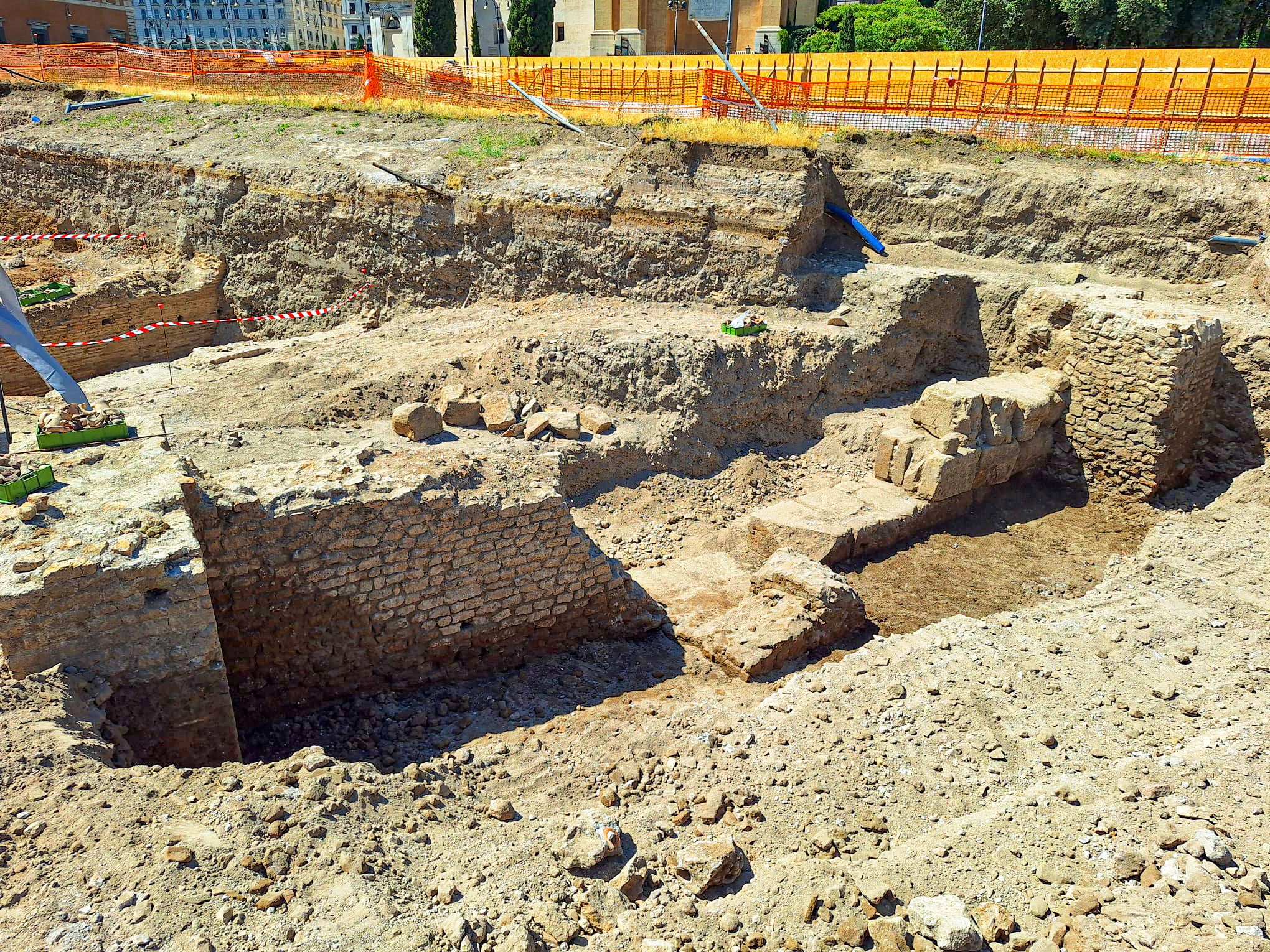ARTICLE AD BOX
Archaeologists have unearthed a hidden ancient palace under Rome that was likely home to the Popes between the ninth and thirteenth centuries AD before the Vatican seat was established.
In preparation for the Jubilee Year 2025, several parts of Rome, including the Piazza San Giovanni in Laterano, have been subject to renovations.
During one such renovation work, researchers stumbled upon complex architecture beneath the Piazza, including walled structures.
The walls were found to have large blocks of volcanic rock bricks, or tuff, that appear to have also been reused by other structures that no longer exist.

Some elements found on the wall, such as the presence of a bandage on the blocks, indicate they were subject to restoration interventions.
In the westward sections of the wall, archaeologists observed a more irregular technique used in its construction.
Researchers suspect these structures may belong to the Patriarchate, the residence of leaders that consisted of a grand reception hall called the monumental basilica.
During the Middle Ages, the structure was enlarged and renovated several times and became the papacy, or the Pope’s official residence, according to the Italian Ministry of Culture.
This was a time of turmoil among Rome’s aristocratic families, experts say, indicating that the wall around the ancient basilica may have served as a form of defence around it.
“The construction of the structure just described took place during a long period in which Rome was the object of the raids of the Saracens, and inside it there were continuous struggles, sometimes violent, between the aristocratic families,” the Italian ministry noted.
It was only in 1305 that the papal capital was moved from the Patriarchate to Avignon, France, the ministry said.

Once the papal seat was transferred to the Vatican, the need to have a structure to defend the Patriarchate fell, and with this, the wall lost its functionality and was buried with all memory of it lost.
The findings offer a glimpse into the life and development of this part of Rome.
“The discoveries of Piazza San Giovanni in Laterano are yet another demonstration of the richness of the territory of Rome, an inexhaustible mine of archaeological treasures,” said Gennaro Sangiuliano, the Italian minister of culture.
The discovery, according to the Italian ministry, is “of extraordinary importance” to Rome and its medieval history, as no other such extensive archaeological excavations have taken place in the region.
“Every single stone speaks to us and tells its story: thanks to these important finds, archaeologists will be able to know more about our past,” Mr Sangiuliano said.









 English (US) ·
English (US) ·